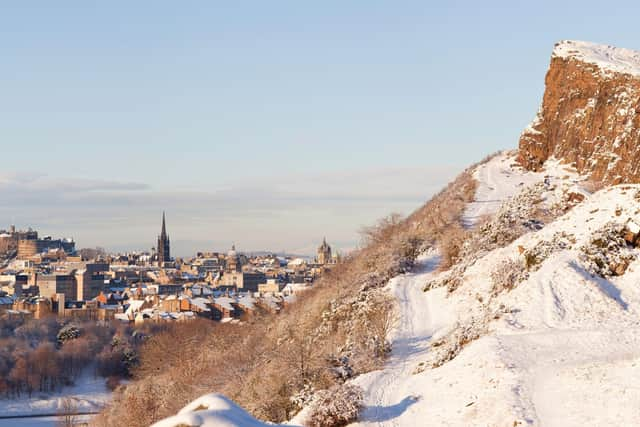When is the shortest day of the year? How long winter lasts in Scotland and when is the winter solstice?
and live on Freeview channel 276
With fog heavy in the air and Edinburgh being the bookmakers’ favourite for a white Christmas in 2021, it seems like winter is well and truly under the way in Scotland.
However, there is a specific date where winter actually starts, dependent on how much light the earth gets.
Advertisement
Hide AdAdvertisement
Hide AdThe exact date changes every year, but the day that winter starts is called the winter solstice.


To make it even more mysterious, there are also arguably two different dates for when winter starts.
Here’s exactly when winter starts in Scotland in 2021 and when the shortest day of the year is.
When does winter start in 2021?
There are technically two answers to the question of when winter starts, depending on which definition you want to use.
Advertisement
Hide AdAdvertisement
Hide AdAccording to the meteorological answer, winter starts on December 1st. That’s because the months of the year are split up neatly, with three months for each of the four seasons. It’s most often used to compare weather and other statistics year after year, as the dates are always the same.
However, if you’re using the astronomical definition of winter, you’ve got a little longer to wait before winter officially starts in the UK.
When is the shortest day of the year?
The astronomical season can vary from year to year, with the first day of winter falling on the winter solstice.
The 2021 winter solstice is just before Christmas on December 21st, making this the first day of the astronomical winter this year.
Advertisement
Hide AdAdvertisement
Hide AdThis is also the shortest day of the year, when the sun’s rays hit the Earth at a shallow angle and for a shorter amount of time.
What is the winter solstice?
The winter solstice is the shortest day of the year and also the longest night. This is because the Earth has turned on its axis so that the north pole tilts away from the sun and is at its furthest point from it for the entire year.
As a result of the Northern Hemisphere spending less time close to and facing the sun, the winter months are much colder and shorter. There are therefore fewer daylight hours and longer nights.
Traditionally, many Britons head to Stonehenge to celebrate the winter solstice, as well as the summer solstice in June, continuing a practice that dates back to prehistoric times. It's even thought that Stonehenge may have been built to represent the movement of the sun across the sky, with the stones’ position framing the sunset on the winter solstice each year.
Advertisement
Hide AdAdvertisement
Hide AdOddly, the winter solstice is also sometimes called midwinter, despite it actually being the official start of winter. Some people think of it as midwinter because the days start to get longer again once this has passed, meaning that winter is on its way out.
How long does winter last?
Conveniently, according to both definitions, winter lasts roughly three months. The last day of the meteorological winter will be on February 28th, 2022, with spring beginning the next day on March 1st.
With the astronomical winter starting later, it also ends later. The last day of winter is therefore March 20th, 2022. This is also known as the spring equinox in the Northern Hemisphere.
Comment Guidelines
National World encourages reader discussion on our stories. User feedback, insights and back-and-forth exchanges add a rich layer of context to reporting. Please review our Community Guidelines before commenting.